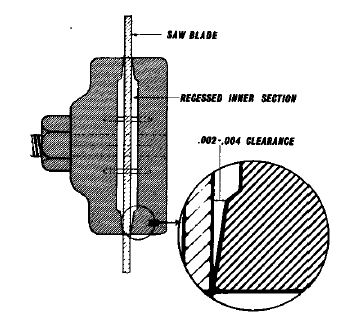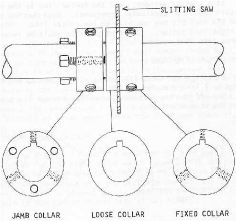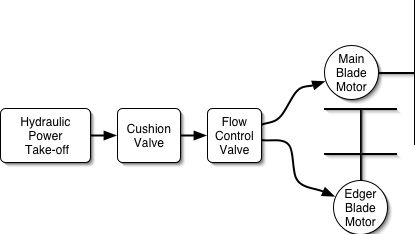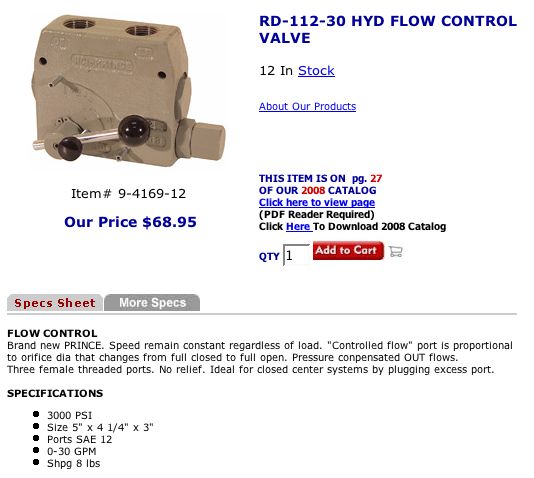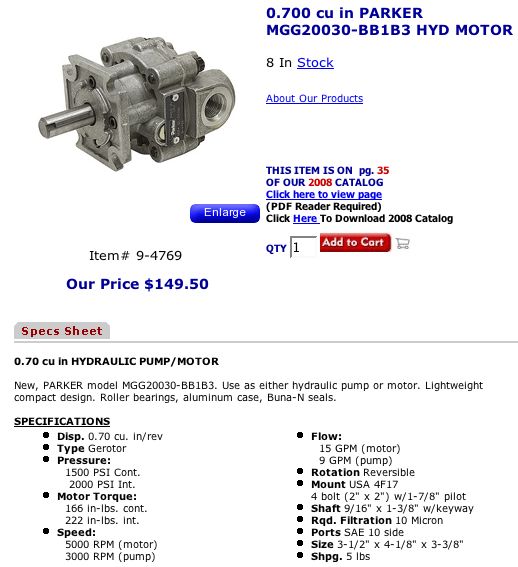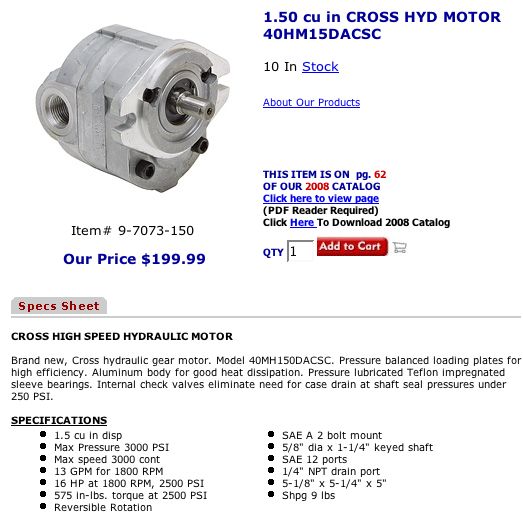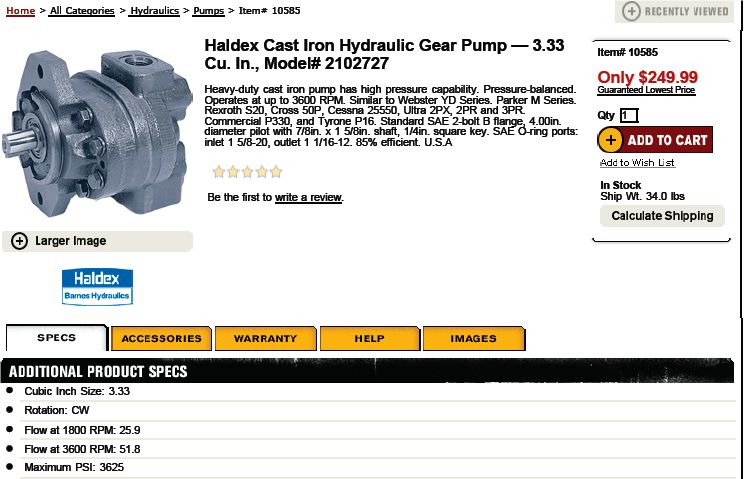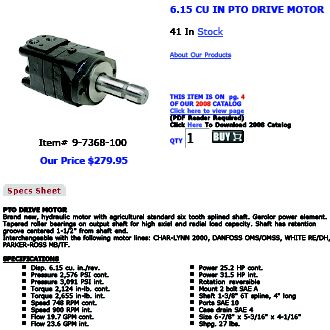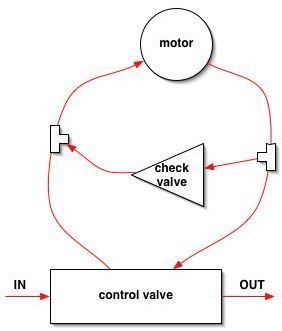Sawmill
- HABITAT: CEB Press - Sawmill - Living Machines - Modular Housing Units
- AGROECOLOGY: LifeTrac Multi Purpose Tractor - MicroTrac - Power Cube - Agricultural Spader - Agricultural Microcombine - Hammer Mill - Well Drilling Rig - Organoponic Raised Bed Gardening - Orchard and Nursery - Modular Greenhouse Units - Bakery - Dairy - Energy Food Bars - Freeze Dried Fruit Powders
- ENERGY: Pyrolysis Oil - Babington Burner - Solar Combined Heat Power System - Steam Engine Construction Set - Solar Turbine - Electric Motors/Generators - Inverters & Grid Intertie - Batteries
- FLEXIBLE INDUSTRY: Lathe - Torch Table - Multimachine & Flex Fab - Plastic Extrusion & Molding - Metal Casting and Extrusion
- TRANSPORT: Open Source Car
- MATERIALS: Bioplastics
Please answer any questions on the Sawmill_Questions page if you can. Thank you!
Product Definition
Sawmill Design Rationale
Sawmill Research
Sawmill sites
- http://www.forestryforum.com/
- http://www.sawmillcreek.org/
- http://www.woodweb.com/index.html#Forums
- http://www.tractorbynet.com/forums/build-yourself/
Local Sawmills
- http://simpsons-nativehardwoods.com/page7.html - St. Joseph, MO
- Watkins Sawmill - Stewartsville, MO - (816) 669-3218
General Sawmill Research
- Dimension sawmills appear to have the highest output - [1] - For production, a chainsaw mill can mill 200 to 400 board feet per day, a band mill can mill 800 to 2,000 board feet per day, swing mills can produce 1,500 to 3,000 board feet per day and dimension mills 2,000 to 4,000 board feet per day. A lot depends on log size, species and products being cut.
- Circular saw blades appear to be easy to manufacture, repair, and have a good lifetime- [2]
- Price comparison of sawmills-[3]
| Lumberlite 24 | $3200 | Band |
| Wood-Mizer LT15 | $6000 | Band |
| Woodsman | $12,000 | Dimensional |
| Lucas | $13,000 | Swing |
| Peterson | $20,000 | Swing |
| Mobile Dimension | $25,000 | Dimensional |
| Mighty Mite | $30,000 | Dimensional |
Bandsaw comparisons:
Blade Research
- 30" blades seem too expensive for most operations, a 20" blade might work and be much more affordable currently.
- Cheapest 30" $1200 - [4]
- Not! That's for concrete cutting
- Cheapest 20" $150 - [5]
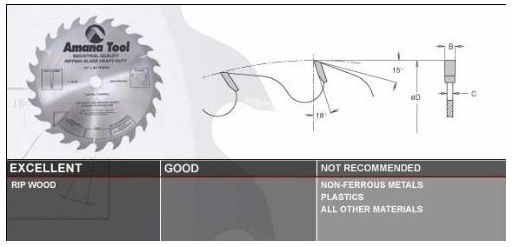
- blades with insertable teeth would be best - [6]
RPM chart from Amana Tools website:
A 20" blade should be about 1500-2500 RPM, a 12" blade about 2500-4500 RPM, a 10" blade about 3000-5500.
From the book "Circular Sawmills and their efficient operation":
| log diameter | saw diameter |
|---|---|
| 8 | 20 |
| 10 | 24 |
| 12 | 28 |
| 14 | 32 |
| 16 | 36 |
| 18 | 40 |
| 20 | 44 |
| 22 | 48 |
| 26 | 52 |
| 30 | 56 |
| 34 | 60 |
| 36 | 64 |
| 38 | 68 |
| 40 | 72 |
| Estimated -> | Known -> | |||||||||||||||
|---|---|---|---|---|---|---|---|---|---|---|---|---|---|---|---|---|
| Saw Diameter | 20" | 22" | 24" | 26 | 28 | 30 | 32 | 34 | 36 | 38 | 40 | 42 | 44 | 46 | 48 | 50 |
| Teeth Number | 24 | 26 | 28 | 30 | 32 | 34 | 36 | 38 | 40 | 42 | 44 | 46 | 48 | 50 | 54 | 56 |
SAW SPEED In general, for good saw performance, a rim speed of 8,000 to 9,000 feet per minute is recommended for sawing hardwoods; 10,000 to 11,000 f.p.m. for softwoods; and 6,000 to 7,000 f.p.m. for frozen woods. The relationship of saw diameter and saw speed necessary to attain a predetermined rim speed is given in table 15.
| Saw Diameter | RPM for 10,000 surface feet per minute rim speed of saw |
|---|---|
| 4 | 1935 |
| 6 | 1860 |
| 8 | 1789 |
| 10 | 1720 |
| 12 | 1654 |
| 14 | 1590 |
| 16 | 1529 |
| 18 | 1470 |
| 20 | 1414 |
| 22 | 1359 |
| 24 | 1307 |
| 26 | 1257 |
| 28 | 1208 |
| 30 | 1162 |
| 32 | 1117 |
| 34 | 1074 |
| 36 | 1033 |
| 38 | 993 |
| 40 | 955 |
| 42 | 909 |
| 44 | 868 |
| 46 | 830 |
| 48 | 796 |
| 50 | 764 |
| 52 | 735 |
| 54 | 707 |
| 56 | 682 |
| 58 | 659 |
| 60 | 637 |
Saw Collar
From "Circular sawmills and their efficient operation":
SAW COLLARS For trouble-free saw operation, both saw collars must be identical and they must be of sufficient size to provide rigid support for the saw plate. Most saw collars are made with a recessed inner section and an outer bearing surface about 3/4-to 7/8-inch wide that contacts the saw plate.
Figure 7. – To insure proper support of the saw blade, collars should be machined with a .002- to .004-inch radial taper on their bearing surface toward the recess.
Saw collars should be machined to provide maximum support for the saw plate. Machining the bearing surfaces of each collar with a slight radial taper toward the collar recess will help to accomplish this (fig. 7). The outer periphery of the bearing surface will then make positive contact with the saw plate after the arbor nut has been tightened properly. The amount of taper should be from .002 to .044 inch in the width of the bearing surface.
Blade Mounting Using Multimachine techniques
Sawmill collaboration
Date: Wed, Jan 21, 2009 at 7:59 PM
Subject: Re: sawmill design To: Marcin Jakubowski <joseph.dolittle@gmail.com>
Hi Marcin,Love the blender format, that is a great image. I think the blade size depends on the logs your cutting, on machines that I make, I give myself a range of blade sizes, 20-30" smaller is cheaper and easy to sharpen. Its a neat design, but still too complex. Why are you using pulleys on hydrolic motors, why not lovejoy right on the shaft? As your doing hydrolic motors, think like rack mounts and give the edger its own table and feed belt. They can be mounted to the headsaw if that is still desirable in the future when the head saw is running well, otherwise, you just pinch and tweak three blades instead of one in start test phase. Running a separate edger is a good idea, three blades is too much for a green miller to keep track of. Ten inch would work fine as edger, and depending on the wood to be cut so would 6". Check out sawmillexchange.com .
Benjamen
Other Sawmills
Sawmill - Design Calculations
Available Power
- Review of LifeTrac hydraulic power calculations - LifeTrac#Calculations - shows that we have total 29 gpm available at 3300 PSI, or a lower flow at 3600 PSI.
- Hydraulic power is defined as Flow x Pressure. The hydraulic power supplied by a pump: P in [bar] and Q in [lit/min] => (P x Q) / 600 [kW]. Ex. Pump delivers 180 [lit/min] and the P equals 250 [bar] => Pump power output = (180 x 250) / 600 = 75 [kW]. 75000W / 745.7 = 100.58hp
- LifeTrac has 91 l/min available from the auxiliary hydraulics, and 228 bar - 91x228/600/.746 = about 46 hp.
- 24 gallons/minute = 91 liters/minute (of 29 gpm total LifeTrac power, 5 is diverted into tractor steering)
- 1 bar = 14.5 psi, 3300 PSI = 228 Bar
- LifeTrac has 91 l/min available from the auxiliary hydraulics, and 228 bar - 91x228/600/.746 = about 46 hp.
Power Distribution Between 2 Sets of Blades
The sawmill has 2 sets of blades: the main blade and the edger blades - see 3d picture - #3D_CAD_-_Using_Blender. Hydraulic power must be distributed to both sets. One motor powers the 2 edger blades, and another motor powers the main blade. Power - or hydraulic fluid flow - must be distributed to both sets of motors to accommodate various cutting scenarios:
- Assume that main blade is 20 inches in diameter, and edger blades are 10"
- Square lumber profiles, such as 2x2s and 4x4s (size in inches)
- Rectangular lumber profiles - such as 2x4s, 4x8s, up to 1x9s
- The case where square profiles are cut requires one cut by the main blade, and equivalent cuts by the edger blades. Since there are 2 edger blades, this requires the condition where the edger blades require twice as much power as the main blade. The power distribution strategy and motor sizing should allow for this. Power ratio of main (Pm) to edger (Pe) blades: Pm/Pe = 1/2
- In the extreme opposite case, such as when cutting 1x10, the power ratio is Pm/Pe = 5
- The middle case exists for 2x4s, 4x8x - where Pm/Pe = 1
Hydraulics Design for 2 Sets of Blades
The point is that flow control must exist where the amount of power that goes to each blade can be varied. Power is controlled by fluid flow rate - or a flow control valve in practice:
Would this valve from Surpluscenter [7] do?:
Hydraulic Motors
Edger Blades - 10"
Main Blade - 20"
Sawmill Design developments
See Sawmill Design Developments
Sawmill - Current Work
We have a hydraulically-driven PTO motor as a start. It will be powered by LifeTrac. LifeTrac has this pump from Northerntool - [8]:
All hoses are already available - it is part of our flexible open source tractor infrastructure. Here are the motor specifications, from Surpluscenter.com:
Here is the hookup diagram:
Note: Since we have 3600 PSI available, we can run 2 of these motors in series to match available power more closely.
A very preliminary prototype drawing, top view:
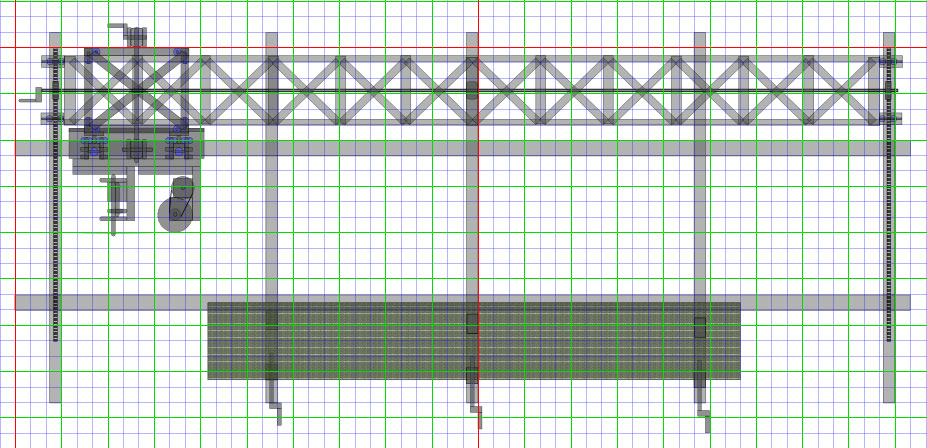
3D CAD - Using Blender
Preliminary 3d pictures of the sawmill:
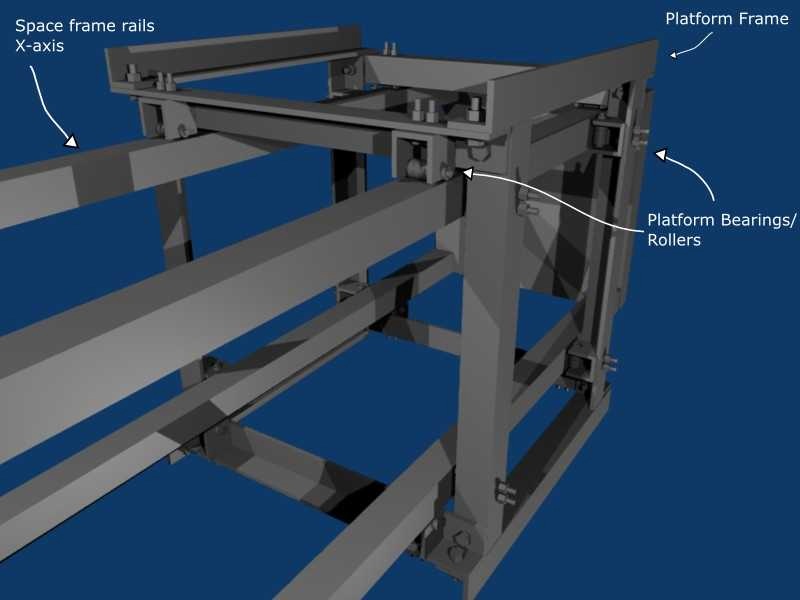
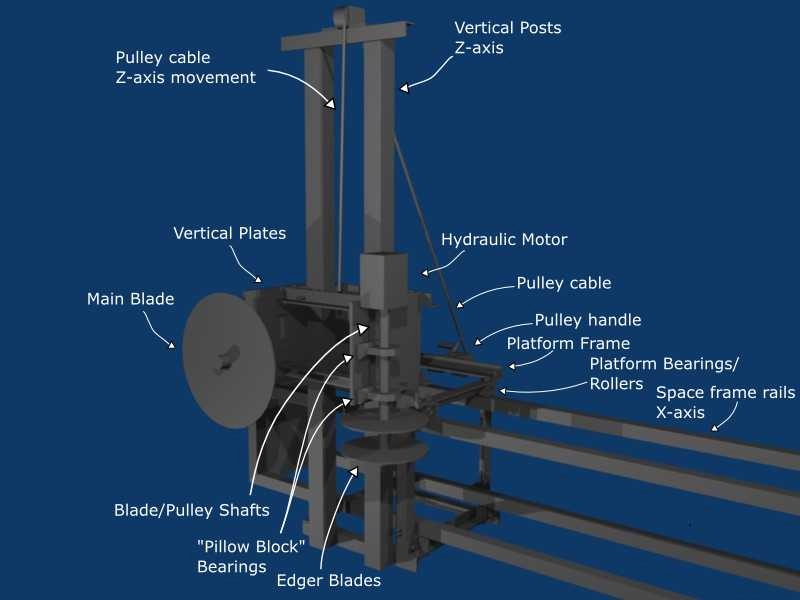
Sawmill Deployment
Implementation
Design
- With design rationale, put it up for review on Red Pages
- Finish design in 3d, go through cutting process
- Get feedback on design, post on sawmilling forums
- Iterate design and feedback until design is finalised
- Make bill of materials for final design
Test Construction
- Build space frame and platform frame as a first test, to test x axis motion
- Test x axis motion
Construction
- Purchase one blade, 30", 2 blades, 12"
- Build cutting head - gear up the blade
- Install all safety devices before operating
- Test sawmill operation without blades attached
Bill of Materials
Development Work Template
- Sawmill - Product Definition
- Sawmill - Design Evolution
- Sawmill - Technical Design
- Sawmill - Deployment and Results
- Sawmill - Documentation and Education
- Sawmill - Resource Development
- Sawmill - Identifying Stakeholders
- Sawmill - Grantwriting
- Sawmill - Collaborative Stakeholder Funding
- Sawmill - Tool and Material Donations
- Sawmill - Charitable Contributions

